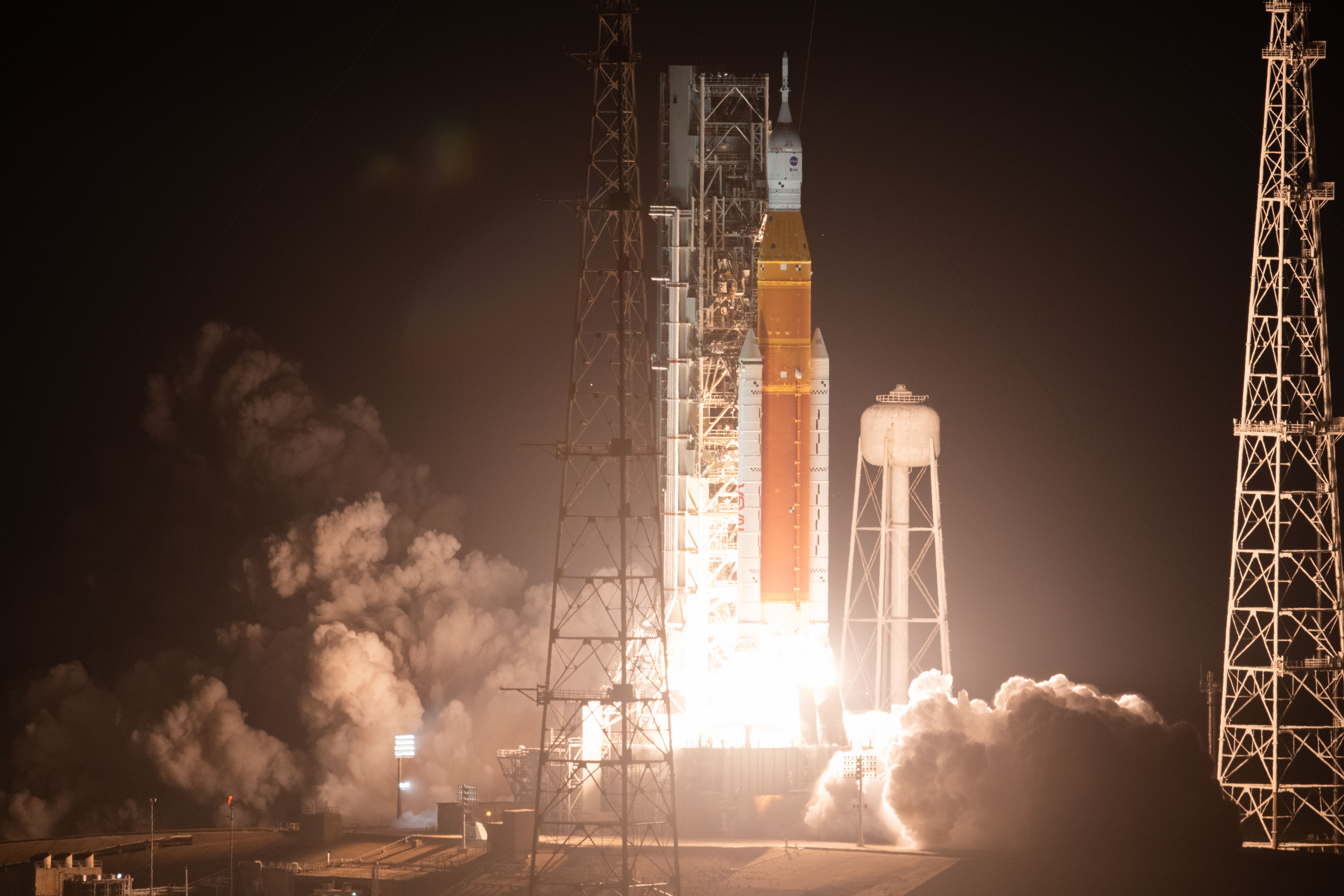Man could be living on the Moon by end of decade – Nasa official
The Artemis 1 mission took off on Wednesday from the Kennedy Space Centre in Florida.

Your support helps us to tell the story
From reproductive rights to climate change to Big Tech, The Independent is on the ground when the story is developing. Whether it's investigating the financials of Elon Musk's pro-Trump PAC or producing our latest documentary, 'The A Word', which shines a light on the American women fighting for reproductive rights, we know how important it is to parse out the facts from the messaging.
At such a critical moment in US history, we need reporters on the ground. Your donation allows us to keep sending journalists to speak to both sides of the story.
The Independent is trusted by Americans across the entire political spectrum. And unlike many other quality news outlets, we choose not to lock Americans out of our reporting and analysis with paywalls. We believe quality journalism should be available to everyone, paid for by those who can afford it.
Your support makes all the difference.Man could be living on the moon before the end of the decade, a leading Nasa official has said following the successful launch of the Artemis rocket.
After a series of failed launch attempts earlier in the year, Artemis 1 took off on Wednesday from the Kennedy Space Centre in Florida.
The uncrewed mission around the moon will pave the way for a crewed flight test and future human lunar exploration.
The Artemis is carrying the Orion lunar spacecraft which is manned with a manikin – a model of the human body used to measure the impacts of the flight on the body.
Howard Hu, the Orion programme manager, said the launch was a “historic day for human space flight”.
He told the BBC’s Sunday with Laura Kuenssberg: ”It’s the first step we’re taking to long-term deep space exploration, for not just the United States but for the world.
“I think this is an historic day for Nasa, but it’s also an historic day for all the people who love human space flight and deep space exploration.
“I mean, we are going back to the Moon, we’re working towards a sustainable programme and this is the vehicle that will carry the people that will land us back on the Moon again.”
Named after the Greek goddess of the moon and sister to the god Apollo, namesake of Nasa’s first moon missions, the Artemis programme will see the construction of the Lunar Gateway – a new space station where astronauts will be able to live and work.
He explained the gateway would act as an orbiting platform which would be a staging post for lunar missions, with the astronauts taking “landers” from the platform to and from the Moon.
Saying that the aim was for people to live on the Moon, he said: “Certainly in this decade we are going to have people living for durations, depending on how long they are on the surface, they will have habitats, they will have rovers on the ground.
“We are going to be sending people down to the surface, they are going to be living there on the surface and doing science.”
He said the lunar missions were a step towards manned trips to Mars.
Mr Hu added: “Moving forward is really to Mars, that is a bigger stepping stone, a two-year journey, so it’s going to be really important to learn beyond our Earth orbit.”
The mission is expected to last 25 days, including outbound transit, the journey around the moon and deployment of satellites, followed by a return transit before splashdown in the Pacific Ocean in December.